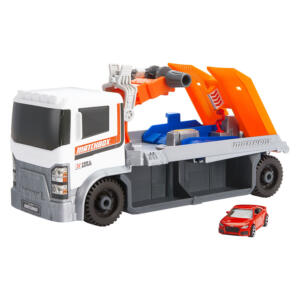Frequently asked questions
What are Matchbox cars, exactly?
At their heart, Matchbox cars are small, die-cast (meaning made by pouring molten metal into a mold) toy vehicles. They’re famous for their realistic details, often replicating real-world cars, trucks, buses, and even construction vehicles and airplanes, all in miniature scale.
Who invented Matchbox cars?
The original Matchbox cars were invented in England by Jack Odell for Lesney Products in the early 1950s. He wanted to create small, affordable toys that children could take to school
Why are they called "Matchbox" cars?
The name comes from their ingenious packaging! The very first Matchbox vehicles were so small (and designed to be affordable) that they came packaged in boxes that looked just like standard matchboxes. It was a clever marketing trick that stuck.
What makes them different from other toy cars, like Hot Wheels?
While both are popular die-cast brands, Matchbox cars are generally known for being more realistic and based on actual production vehicles, focusing on details and functional realism. Hot Wheels, on the other hand, often feature more fantastical designs, custom cars, and are geared towards speed and track performance. Both are fantastic, just with different philosophies!
Are they just for kids?
Definitely not! While Matchbox cars are perfect for imaginative play and developing hand-eye coordination in children, a massive adult collecting community exists. Many adults collect them for nostalgia, the intricate details, the thrill of the hunt, or simply because they appreciate the miniature artistry and automotive history they represent.
How many different Matchbox cars have there been over the years?
Oh, countless! Over the decades, thousands upon thousands of unique models, endless color variations, and special editions have been produced. Trying to collect them all would be a monumental, perhaps impossible, but incredibly fun task.




